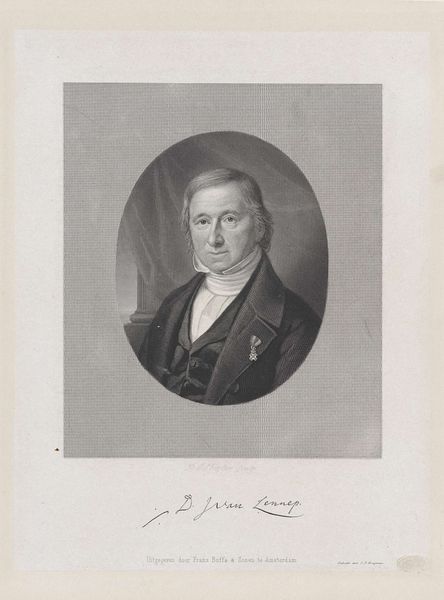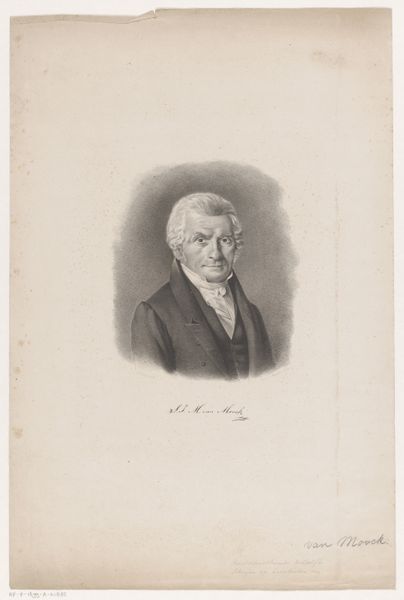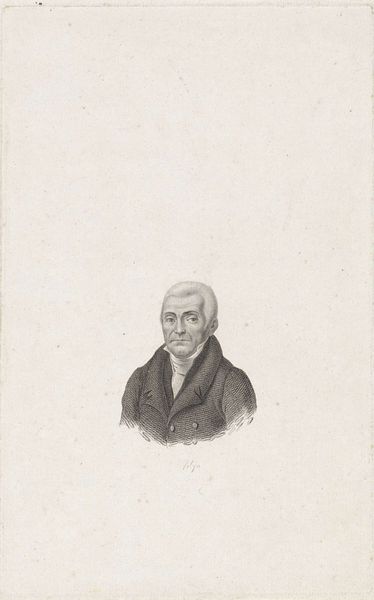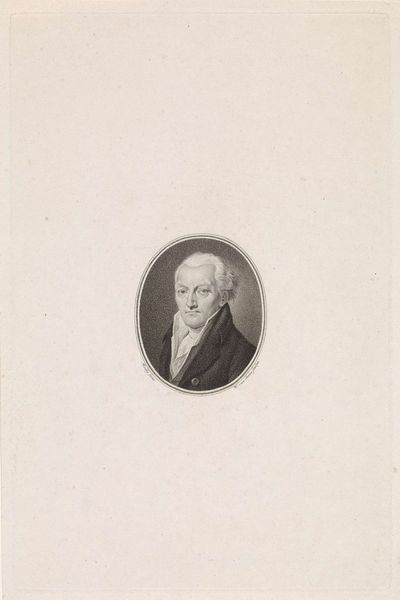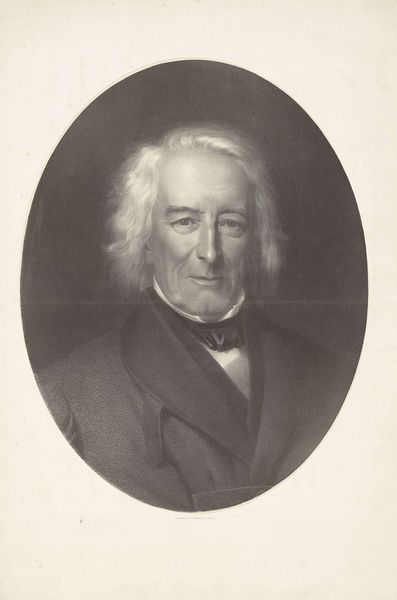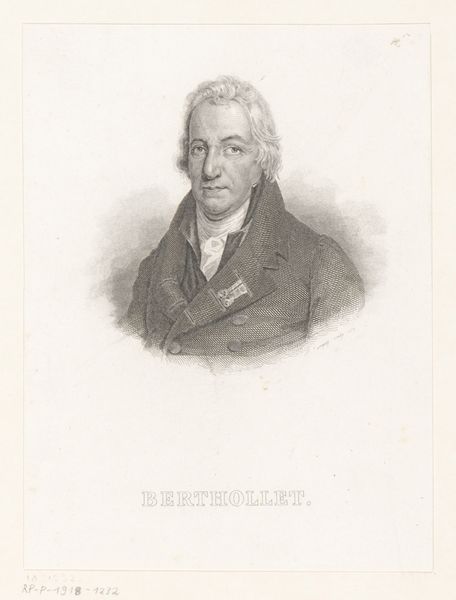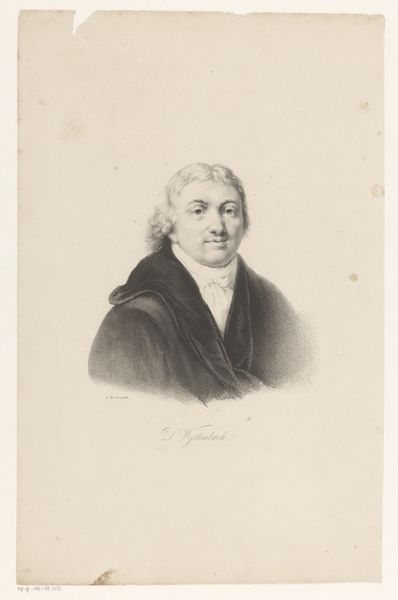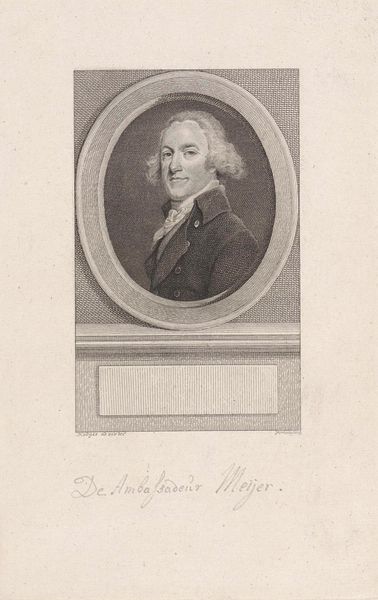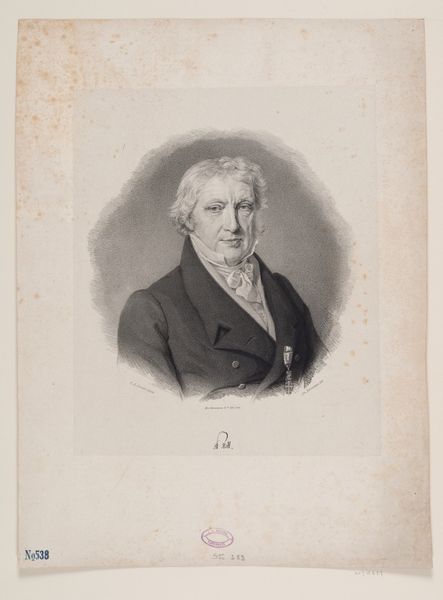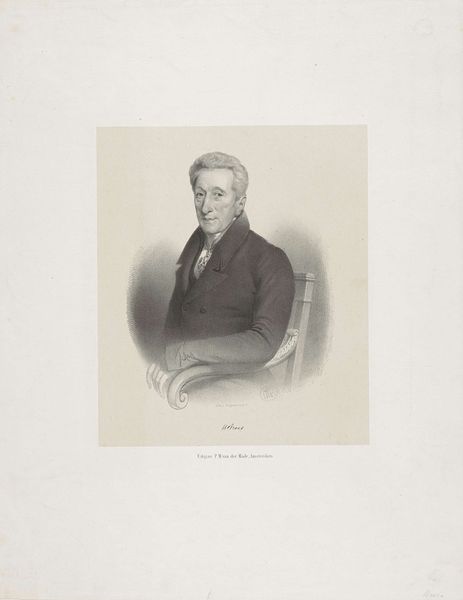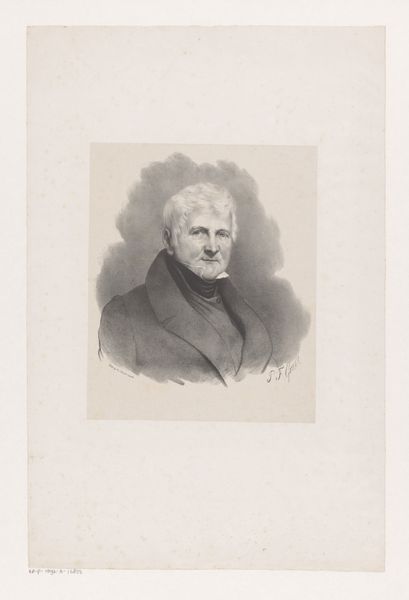
drawing, graphite
#
portrait
#
drawing
#
pencil drawing
#
graphite
#
academic-art
#
graphite
#
realism
Dimensions: height 213 mm, width 144 mm
Copyright: Rijks Museum: Open Domain
Curator: Before us, we see Dirk Jurriaan Sluyter's rendering of "Portret van Johannes Hendricus van der Palm," dating from before 1854. This drawing, crafted with graphite and pencil, resides here at the Rijksmuseum. Editor: My initial impression is one of restraint. The grayscale palette and tightly controlled lines create a rather formal, almost stoic mood. The composition itself feels quite classical in its balance. Curator: Indeed. Sluyter's piece functions very much within the tradition of academic portraiture. Consider the subject, Johannes Hendricus van der Palm. He was a celebrated professor of oriental languages, a theologian, and a statesman—a prominent public figure whose image would have carried considerable symbolic weight. Editor: And Sluyter captures that weight rather effectively through the meticulous rendering of detail. The precision in the modeling of the face, for example, brings a certain gravity. Semiotically, every line contributes to a narrative of seriousness and intellectual power. Curator: It’s interesting you note the 'weight'. Consider the context: portraiture during this period played a vital role in shaping public perception. These images circulated, influencing opinions about Van der Palm and, by extension, the values he represented: knowledge, faith, and civic duty. Editor: The handling of light, however subtle, is quite skillful, directing the viewer's eye toward the subject’s face and subtly modeling the planes to enhance volume. The detail in his coat is a wonderful contrast of hatching. Curator: But isn't that precise detail part of a larger project? The overall impression of dignified restraint is, I think, no accident. The image serves to legitimize Van der Palm's authority and project an image of stability at a time when Dutch society was undergoing considerable change. Editor: I suppose even such "objective" rendering serves the needs of power in representation. All in the details and those details tell an agenda. Curator: Precisely. Looking closely unveils how visual artistry intersects with societal forces. Editor: True, recognizing both artistic decisions and socio-political dynamics deepens our experience. Curator: Indeed. Let’s move along and examine what further artistic dialogues await us in these galleries.
Comments
No comments
Be the first to comment and join the conversation on the ultimate creative platform.
